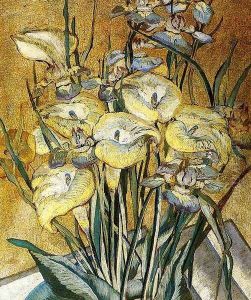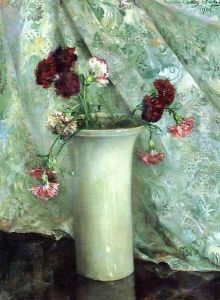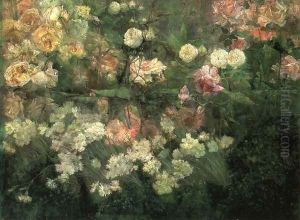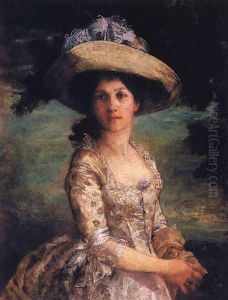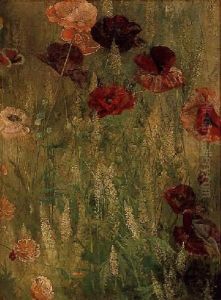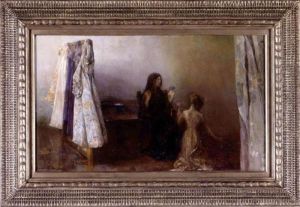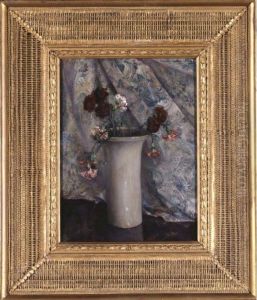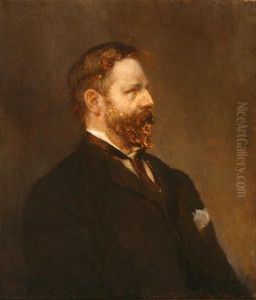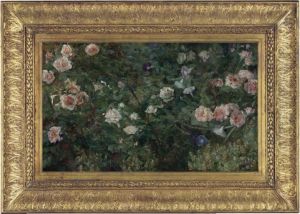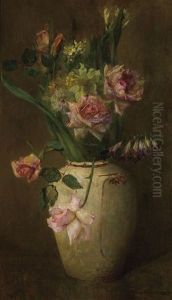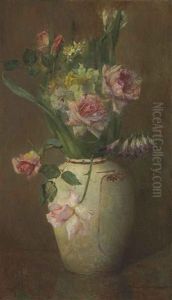Maria Oakey Dewing Paintings
Maria Oakey Dewing was an American painter born on October 27, 1845, in New York City. She grew up in a creative environment, as her mother was an amateur artist, and her father was an editor for the New York Evening Post. Encouraged to pursue her artistic talents, Dewing studied at the Cooper Union School of Design for Women and later at the National Academy of Design.
Her initial work focused on figurative subjects and portraiture, but she is best remembered for her floral still lifes and lush garden scenes, which combine elements of Tonalism and Impressionism. In 1881, Maria married fellow artist Thomas Wilmer Dewing, and the couple became part of the Cornish Art Colony in New Hampshire, which played a pivotal role in their artistic development.
Throughout her career, Maria Oakey Dewing exhibited her work at prominent venues, including the National Academy of Design and the Paris Salon. She was also a member of the Society of American Artists and the National Association of Women Artists. Dewing's paintings are characterized by their delicate brushwork, refined color palettes, and serene compositions, reflecting her personal fascination with the beauty of nature.
Despite her significant talent, Maria Oakey Dewing's career was somewhat overshadowed by that of her husband, and she did not receive the same level of recognition during her lifetime. Nevertheless, her contributions to American art have been increasingly acknowledged, and her works are now held in several important collections, including the Smithsonian American Art Museum and the Metropolitan Museum of Art.
Maria Oakey Dewing passed away on December 13, 1927. As an artist, she left behind a legacy of enchanting garden scenes that continue to captivate viewers with their beauty and tranquility. Her paintings stand as a testament to her skill and passion for the natural world, and they remain an important part of the American artistic heritage.
